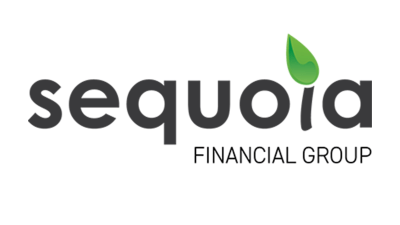Equity loans: paying for protection
While traditional asset consultants are confounded by the concept of protected equity loans — their orthodox view is that risk is controlled by asset mix and diversification, not by buying protection — financial advisers are increasingly attracted to protected loans, as a tax effective diversification tool.
So who is right?
Protected loans are simply the purchase of shares using a limited recourse finance arrangement, where the investor can choose to hand the shares back in full satisfaction of the loan.
To hedge the risk of this occurring in a falling market, the issuer of the protected loan buys a put-option so it can sell the shares at the same price as the outstanding loan amount. The issuer passes on the cost of the put-option to the investor via the premium interest rate. Some protected loan issuers, like Merrill Lynch, go one step further: they advance money on the security of the shares bought, and will lend up to 100 per cent of the share price if you also purchase a put-option (the same as if the issuer had done so itself).
Apart from the investor’s initial cash outlay (covering interest, fees and charges including the cost of the put-option), the investor has no share price risk. If the share price goes up during the term of the loan, the investor can repay it and either hold the shares or sell them at a profit. If the share price declines, the investor can simply walk away from the loan. High levels of gearing involve very low initial cash outlays by the investor, and full gearing involves payment only of the loan interest cost and associated fees and charges.
The overall return on well selected shares offering strong franked dividends substantially lessens the real cost of protected loans, and this is further reduced by the deductibility of interest for them. (Since Australian Taxation Office litigation that challenged [and lost] the full deductibility of interest payments, the law has changed so that 85 per cent of the interest for a five year protected loan is deductible.)
Financial performance
What is surprising is how little these facilities can cost, once you take account of the tax benefits and dividends. Consider the case of a portfolio of three blue chip shares:
Based on current rates, the total cost of a protected loan over the portfolio would be:
After tax benefits and dividend income, the actual costs are reduced significantly:
For advisers with clients concerned about short-term volatility, protected loans can be a useful way to accumulate a share portfolio. Of course, the preferred way to gain direct exposure to the share market is to buy and hold quality stocks for the longer term, using good stock selection and portfolio diversification to reduce risk.
But some investors are simply attracted to the notion of capital protection, and the key when advising them is to ensure that they have confidence in the prospects of the shares they borrow against. Strong dividends help reduce the total cost of the protected loan, but ultimately it’s the growth in the underlying share price that makes money for the investor.
A smart strategy is to take out a protected loan over a basket of shares, and as the prices of individual stocks rise, move to a lower cost margin lending facility, using the equity in the shares to cover the initial margin requirements.
This challenges the flexibility of some protected loan providers, which impose break costs on closing out positions that can erode some of the benefits. This is avoided where the facility involves the direct ownership of put-options (which does, of course, impose an execution difficulty — that is, the need for the investor and adviser to understand and be able to transact in the options market).
Another smart approach is to hold the shares for the longer term, and to retire the debt by selling a portion of the initial holding, leaving the balance as a good income generating asset for retirement.
Risks, fees and charges
A simple view of protected equity loans is that they allow for higher leverage than ungeared or low geared products. On this view, they can be used for speculation on stocks that are expected to rise. The financial performance of highly geared portfolios can be spectacular where the underlying share price rises, but the risk is not for the faint hearted.
Not only does the cost of gearing need to be recovered through share price appreciation, but downside risk is strongly magnified with this type of leveraged approach (if a portfolio is geared 10 times by leverage, every $1 loss on the underlying shares will mean a $10 loss on the portfolio). Highly leveraged portfolios are not usually recommended for unsophisticated investors.
A far more interesting approach to using protected loans has begun to emerge. As a result of the mathematical ‘put/call parity’ theorem, in normal market conditions the cost of a protected loan, less the value of dividends and franking credits received on it, will be equal to the cost of a simple ‘at the money’ call warrant over the same stock.
In other words, protected loans behave like dividend paying call warrants (simple call warrants do not pass dividends through to the investor). This is particularly attractive for investors wishing to pursue aggressive derivative trading strategies, but who also value fully-franked dividends.
Verdict
Protected loans are traditionally considered high risk/reward instruments, suitable primarily for investors wishing to magnify profits in a rising share market. Used this way, they can provide significant returns but also expose investors in market downturns to the risk of loss of the interest paid.
A progressive approach is to use the protected loans as a surrogate for a simple call warrant, and in this capacity, use the dividends and franking credits to increase yields and enhance the tax profile within the overall investment portfolio.
Tony Rumble is editor of Direct Investing. This and other progressive direct investing portfolio strategies are the focus of the upcoming 1st Annual DIRECTINVESTING Conference on June 23-24, 2004. For further details, go to www.directinvesting.com.au
Recommended for you
Centrepoint Alliance has overtaken Count as the second largest AFSL with more advisers in the pipeline and strong EBITDA growth predictions for FY2026.
ASIC has released an update to its regulatory guidance on managing conflicts of interest for financial services businesses on the back of its private markets surveillance.
Sequoia Financial Group has flagged a series of non-cash impairments for the first half of FY26, citing exposure to Shield and First Guardian and provisions for potential professional indemnity insurance claims.
The Australian Wealth Advisors Group has completed two strategic investments, doubling its number of authorised representatives and increasing its FUMA by more than $1 million.










